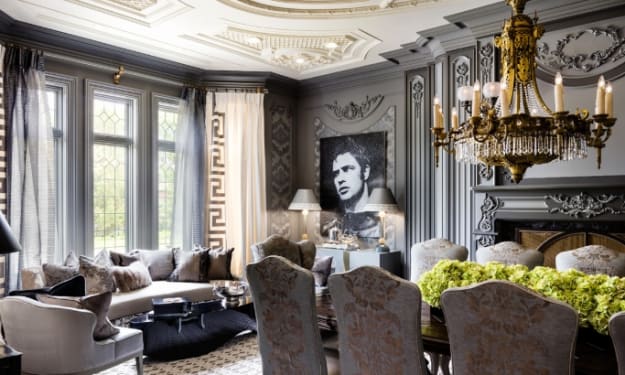The Importance of Rugs and How to use Them for Interior Design
Rugs and Interior Design Relation

Rugs play a vital role in interior design, offering more than just a soft surface underfoot. They can define spaces, add warmth, introduce color and texture, and even enhance acoustics. Handmade modern rugs, in particular, add a unique, artistic touch to your décor, elevating the overall aesthetic. Understanding the importance of rugs and how to use them effectively can transform your home into a cohesive, stylish sanctuary.
Here are the key points:
The Importance of Rugs-
Defining Spaces:
In open-concept homes, rugs can delineate areas, creating a sense of order and structure. For instance, placing a rug under a dining table can separate the dining area from the living space without the need for walls or partitions.
Adding Warmth and Comfort:
Rugs add a layer of insulation, making rooms feel cozier and more welcoming. In chilly climates, they assist retain heat, making the environment warmer.
Introducing Color and Texture:
A well-chosen rug can be a focal point, introducing vibrant colors, intricate patterns, and varied textures. This adds depth and interest to a room, complementing or contrasting with other design elements.
Enhancing Acoustics:
Rugs absorb sound, reducing echo and noise levels in a room. This is particularly useful in large, open spaces or rooms with hard flooring, where sound can bounce off walls and floors.
Protecting Flooring:
Rugs can help protect fragile flooring from wear and tear, particularly in high-traffic areas. They protect against scratches, stains, and other damage, extending the life of your floors.
How to Use Rugs for Interior Design-
Choosing the Right Size:
The size of the rug should be proportional to the room and furniture. In a living room, for instance, a large rug that fits under all major furniture pieces can tie the room together. In a bedroom, a rug placed under the bed should extend beyond the sides to provide a soft landing. Contemporary handmade rugs are excellent choices for these spaces, offering both style and comfort while ensuring the proportions are balanced and aesthetically pleasing.
Layering Rugs:
Layering rugs can add complexity and texture to a space. A larger, neutral rug can serve as a base, with a smaller, patterned rug layered on top for visual interest. This technique is ideal for creating a cozy, eclectic look.
Using Rugs to Anchor Furniture:
Rugs can anchor furniture arrangements, making them feel intentional and cohesive. In a seating area, all front legs of the furniture should rest on the rug to create a unified space.
Selecting Colors and Patterns:
When choosing a rug, consider the existing color scheme and style of the room. A bold, patterned rug can be a statement piece in a neutral room, while a solid-colored rug can balance a room with busy decor. Patterns can also hide stains and wear better than solid colors.
Considering Material and Texture:
The material and texture of the rug should align with the room's function. For high-traffic areas, durable materials like wool or synthetic blends are ideal. Soft, plush rugs work well in bedrooms or living rooms where comfort is key.
Seasonal Changes:
Rugs can be swapped out seasonally to refresh a room's look. Lighter, brighter rugs can be used in the spring and summer, while thicker, darker rugs can add warmth in the fall and winter.
Practical Tips for Rug Placement-
- Living Room: Place the rug under the front legs of sofas and chairs to create a cohesive seating area.
- Dining Room: Ensure the rug is large enough to accommodate the table and chairs, even when the chairs are pulled out.
- Bedroom: To create a comfortable, inviting space, position the rug under the bed and stretch it beyond the sides and foot.
- Hallways and Entryways: Use runners to add warmth and protect floors, ensuring they are wide enough to cover the majority of the pathway.
Conclusion:
Rugs are a versatile and essential element in interior design, offering both functional and aesthetic benefits. Hand knotted custom rugs, in particular, provide a unique and tailored touch that enhances the beauty, comfort, and cohesion of your home. By understanding how to choose and place rugs effectively, you can make the most of their ability to define spaces, add warmth, and introduce color and texture, ensuring that the right rug can make all the difference in your interior design.
About the Creator
Art, Design + Learning Studio
Welcome to the Art, Design and Learning Studio: Best community celebrating global creativity, showcasing diverse talents from around the world.
Enjoyed the story? Support the Creator.
Subscribe for free to receive all their stories in your feed. You could also pledge your support or give them a one-off tip, letting them know you appreciate their work.






Comments
There are no comments for this story
Be the first to respond and start the conversation.